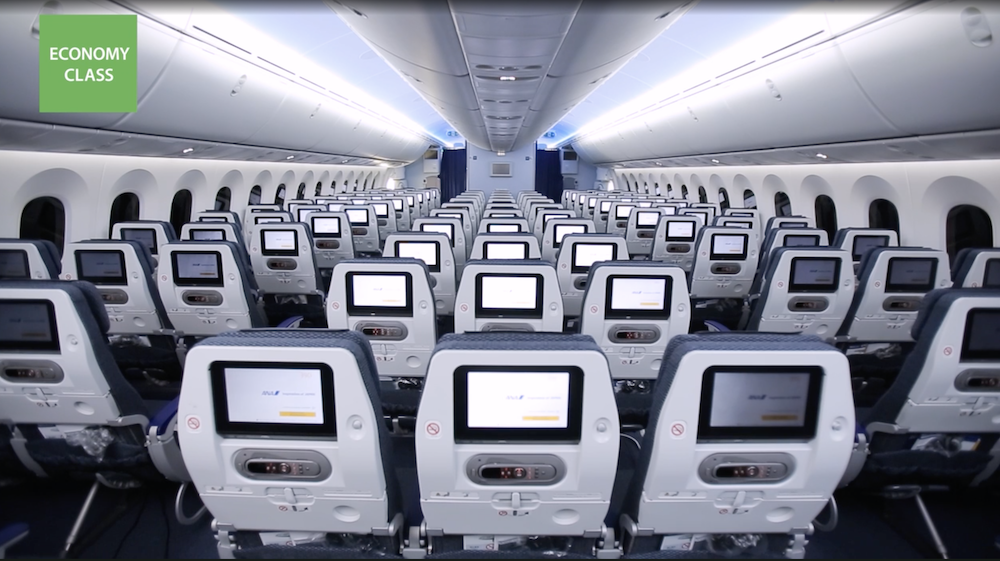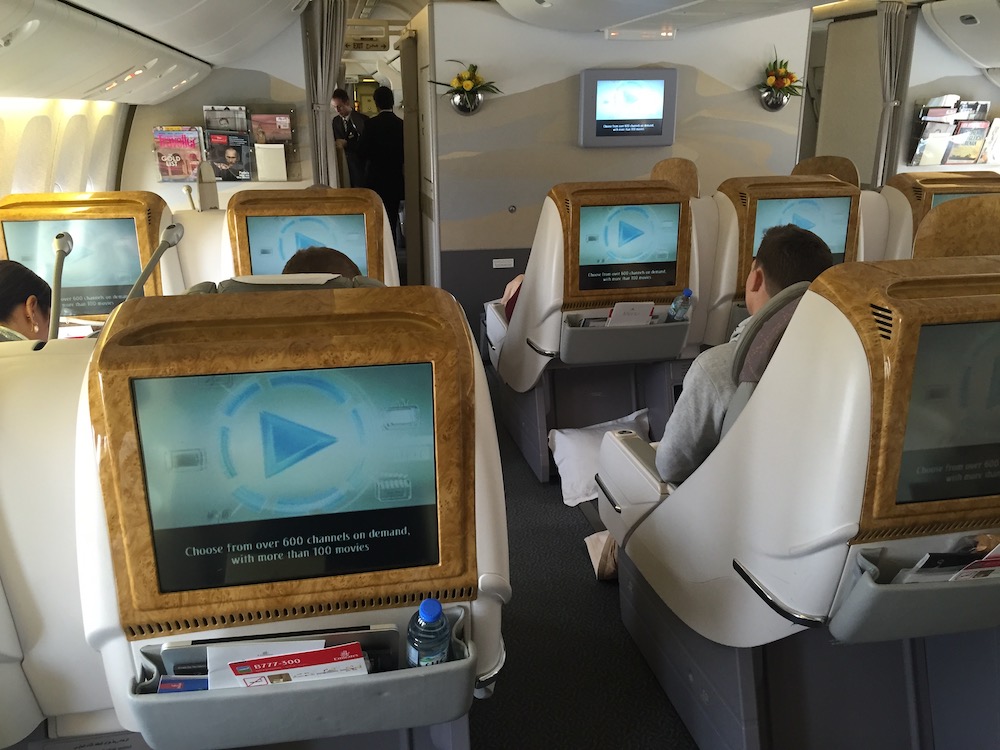Nothing is more epic than a far-flung adventure trip across the globe—but getting there can often be a drag. In fact, a long-haul flight can be brutal—a blow to comfort, your joints, and overall health—and destroy your body! It doesn’t get any better after you land, considering a time zone change can disturb your sleep cycles. I’ve taken hundreds of flights, sometimes through 3 legs adding up to 24 hours, so I know how to survive super long flights without destroying my body.
Despite the laundry list of detriments, a long flight at 35,000 feet can be a breeze if you know how to prepare in advance. These hacks will help you sit back, relax, and enjoy the long flight—and I guarantee your body will thank you for it.
8 tips on how to survive super long flights without destroying your body

1. Stay busy, no matter what!
Now’s a good time to binge watch Curb Your Enthusiasm, crack open a novel or map out your journey. When your brain is busy, it’s anticipating what happens next, which makes time seem to fly by (a waiter at a packed restaurant or a student at a fascinating lecture can attest to this).
The worst thing you can do on a long flight is just sit there thinking about how long the flight is.

2. Eat the right foods.
Everyone loves the sound of the food cart coming down the aisle, but you might want to think twice about the packaged meal.
Airline food is notoriously heavy and sodium loaded, which can make you feel uneasy in your seat for the rest of the flight (it can also compromise good sleep).
A general rule of thumb: don’t eat anything you wouldn’t eat at home. Thankfully, all major airlines offer meals that match your dietary restrictions—which you can pre-order at the time of booking—like vegetarian, sodium-free, gluten-free and even kosher. You can also bring your own TSA-friendly foods in small containers, like quinoa and fruits.

3. Do stretches right in your seat.
Long flights take a physical toll on your body (ever heard of “economy class leg?”). Sitting for long periods of time can cause minor back pain, fatigue, stiff joints and even blood clots.
Before you leave for the airport, stretch as much as you can, build up your core (like with the plank) and use a foam roller to loosen up muscles. Then, when you’re on the flight, periodically move body parts to keep blood flowing and loosen stiffness. Do simple exercises like ankle circles, foot pumps, knee lifts and neck rolls to stay limber and keep your circulation flowing. Honestly, this is how to survive long flights, and your body will thank you for it.
4. Take cold-busting supplements.
We hate to be a downer, but planes carry a lot of germs (which we now know after the pandemic!), and there’s nothing worse than getting sick for your entire trip.
Take extra preventative measures by bringing loads of Vitamin C and multivitamins for your flight, and eat healthy foods chockfull of antioxidants like fruits and vegetables. This will help keep you nourished and protect your health for the long flight. I take GNC Multivitamins since they give me energy and are chockfull of antioxidants, but you can take whatever works best for you. It’s a great way to survive long flights.
GNC is my favorite multivitamin to take, not just on a plane, but daily. It’s highly rated not only on Amazon, but any men’s magazine will list it in their top 10 vitamins and supplements lists. They also do have them for women.
5. Time your sleep cycle to avoid jet lag.
There is no easy cure for jet lag, but the best solution is to synchronize your flight with your sleep cycle. Long overnight flights in general are optimal routes (as opposed to oversea morning flights) that better match your sleep schedule.
For instance: US to Asia and US to Europe direct, overnight flights will get you to the destination in the morning, so you can sleep on your regular cycle as you would at home (you just have to tough it out as long as you can during the first day you land). Taking an overnight flight also helps time go by as you’re asleep the majority of the flight.
It’s also a good idea to get as much shut eye as you can on a flight; this way, you’ll be less tired after you land, and having a good night’s sleep is always important for your health.
6. Sleep without pills.
While it’s important to get sleep, it might be challenging in a contortionist position on a plane. To raise comfort levels, bring a neck pillow for support.
If you have a heavy coat, use it for lumbar support (or you can try the original McKenzie Lumbar Roll), which helps your posture as you snooze. This is also great if you have lower back pain. I’ve suffered from a back condition and wrote about how to travel with back pain if you’re also susceptible. Also, if you can, nab the bulkhead seat (front of the cabin) for more leg space, as well as a window seat to rest your head.
Most airlines offer eye masks and earplugs if you need it, but bring a set of your own just in case. For many passengers, listening to ambient music on your phone helps you fall into a lull.

7. Stay hydrated (this is crucial).
Cabin air is drier than the Sahara Desert, which makes you feel tired, causes dry mouth and makes you dizzy. It’s a discomfort you can avoid by staying hydrated.
If you’re worried about drinking buckets of water (which will have you going to the bathroom frequently), bring water with electrolytes (or coconut water and sports drinks, which are loaded with the stuff), electrolyte tablets and eat cucumbers and tomatoes, which are 95 percent water.
You won’t feel bloated, and you’ll be hydrated for the course of your flight.
8. Fly business class if you can.
If money is no object, splurge on business class. Most premium cabins now offer fully-flat seats, which takes the pressure off your spine and back as you sleep, and they’re definitely more spacious so you don’t feel cramped.

There’s less people up front, so you can get up and walk about without causing a traffic jam in the aisle or disturbing people. Stress levels are minimized in business class, which lessens taught muscles. Lastly, there are more and often healthier food options (and it’s a lot better than coach).
In many cases, you’ll get fresh-squeezed orange juice instead of boxed OJ, which is not only hydrating but has Vitamin C straight from the source. Premium cabins are a better way to get to your destination refreshed, so think about cashing in those frequent-flier miles for an upgrade. Honestly, this is a great way to survive long flights.
Do you have any tips on how to survive long flights? Let us know in the comments below.
More stories:
6 flaws in business class that airlines hope you don’t notice
Expert review: Nouhaus Ergo3D Ergonomic Office Chair for remote working
Cozy Earth sheets review: are they really the world’s softest sheets?
6 best airlines to fly economy class
Travelbinger is proud to be a publisher with Google News and Apple News.
Some of the links in this post are affiliate links. If you click on the link and purchase the item, I will receive an affiliate commission. Please do! I’m a one-man team for this website, so any help is sincerely appreciated.
Travelbinger is now on YouTube! Subscribe here for exclusive travel tips and advice from founder Jimmy Im. Follow us on Twitter, Facebook and Instagram.
Jimmy Im has traveled to 113 countries, stayed at over 600 hotels and clocked millions of air miles. He currently lives in New York City.

